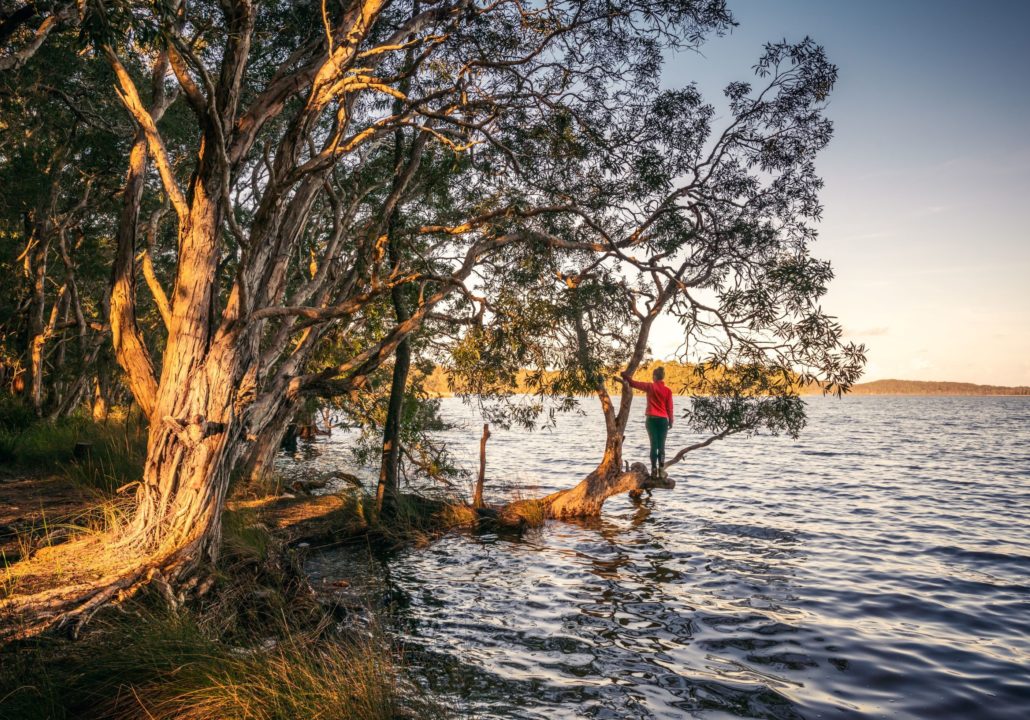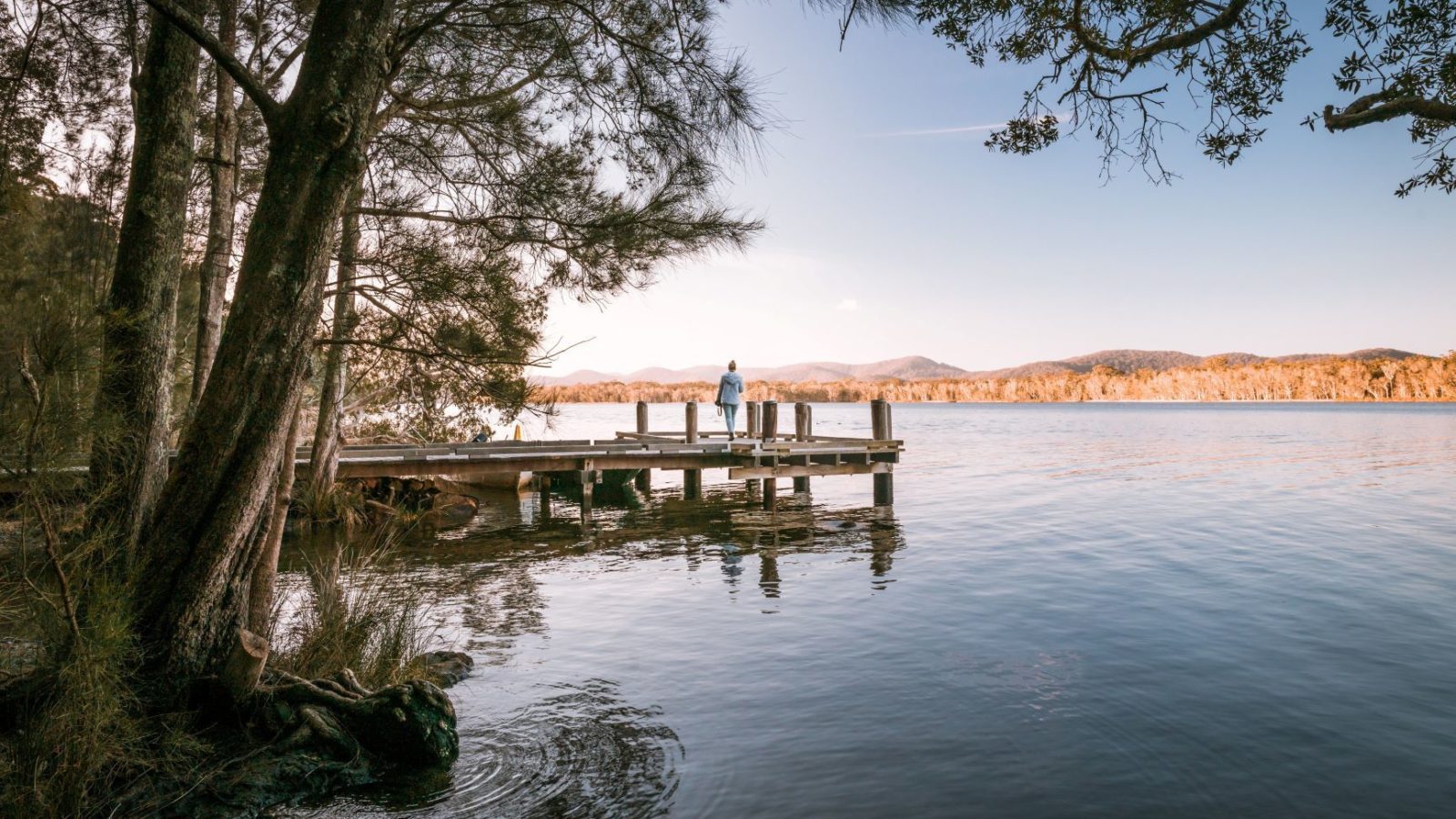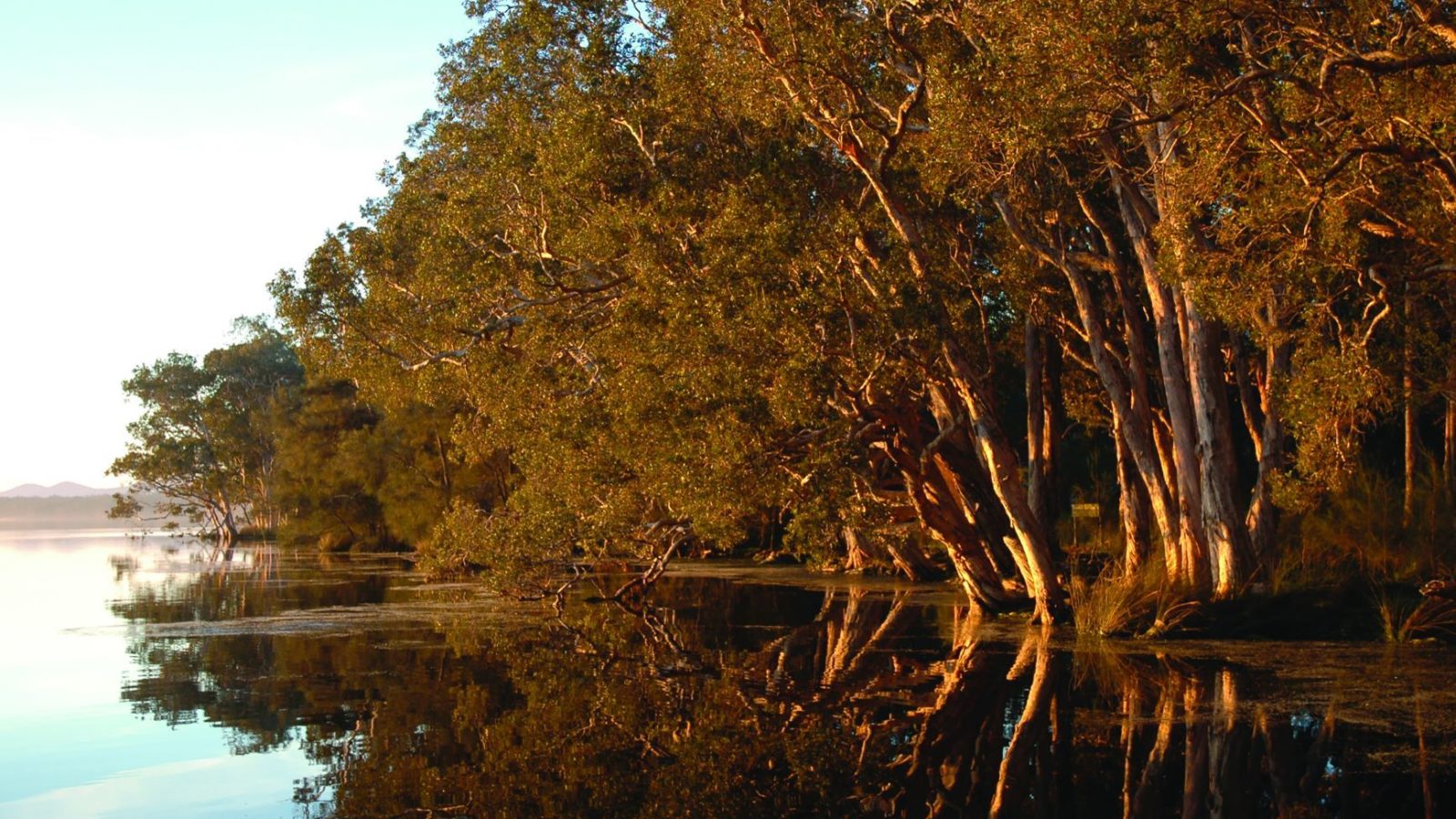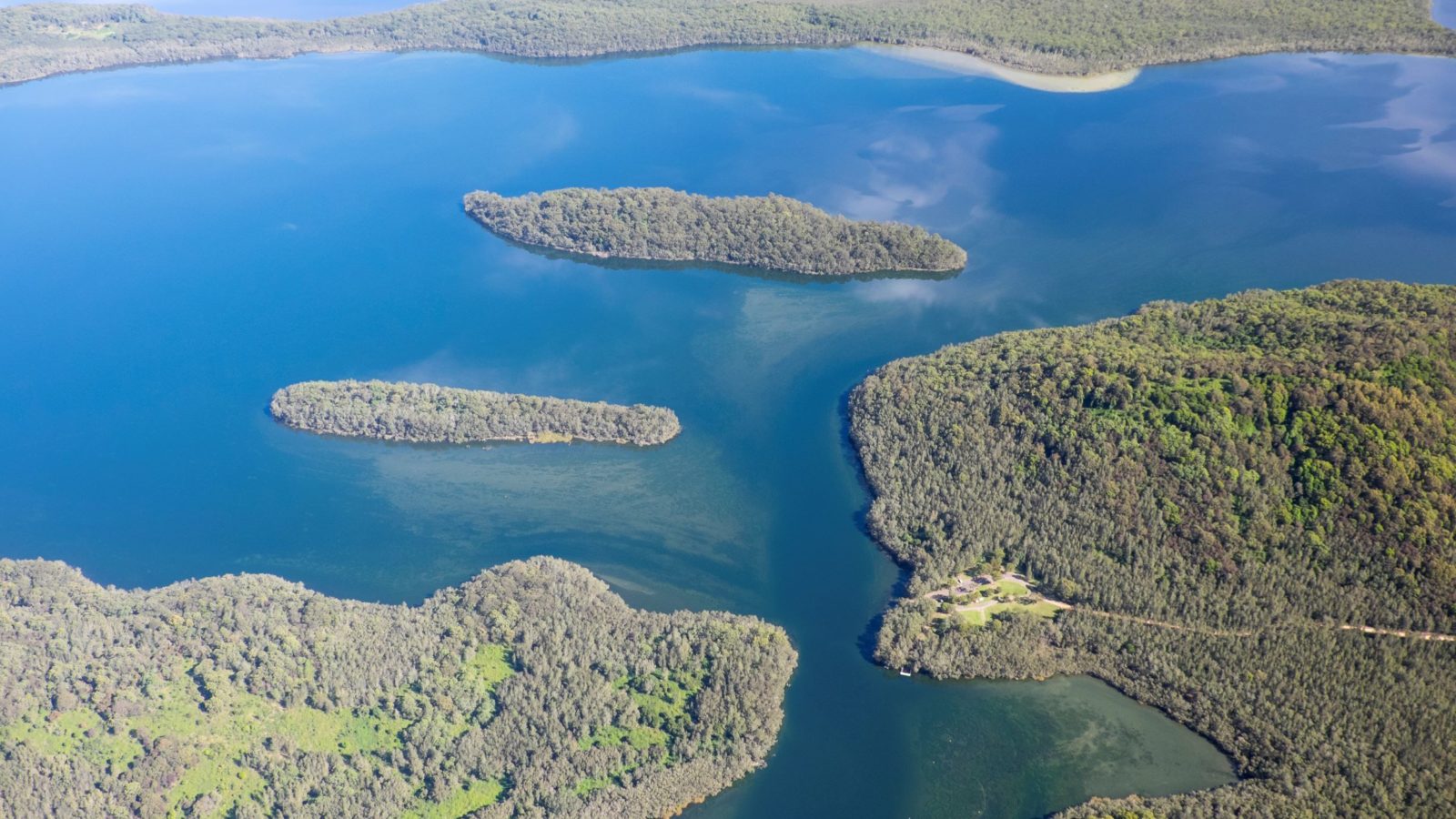An extraordinary place of huge diversity, internationally recognised under the Ramsar Convention.
Myall Lakes has been recognised since June 1999 as a place with rare or unique wetlands that are important for conserving biological diversity. It's one of 66 sites on the list of Australian wetlands under the Convention of Wetlands of International Importance, also known as the Ramsar Convention.
There are just three coastal locations in NSW that are Ramsar listed sites: Myall Lakes in the Barrington Coast, Towra Point at Kurnell and the Hunter Estuary at Newcastle.
The Ramsar Convention was created in the Iranian town of Ramsar on 2 February 1971 and each year the World Wetlands Day is celebrated on that date.
Key features of the site
The Myall Lakes Ramsar wetland is located within the Myall Lakes National Park within the Barrington Coast of New South Wales. The national park comprises four main lakes (Bombah Broadwater, Boolambayte, Two Mile and Myall Lakes), together with the lesser areas of Nerong Creek, sections of the Upper and Lower Myall River, Boolambayte Creek, Fame Cove Inlet and Broughton Island.
The Ramsar site incorporates a number of distinct wetlands associated with the waterways and dune systems.
The waters of the Myall Lake system are shallow and of roughly uniform depth (2.4-3.7m) and lake level fluctuations are associated with rainfall rather than tidal influences. The main input of fresh water to the lake system is from the Myall and Crawford Rivers. The Myall Lakes comprise a series of fresh, saline and brackish water bodies of differing depths and associated vegetation types.
Myall Lakes support a high plant diversity with 968 species of plants and 10 threatened ecological communites. The major vegetation communities associated with Myall Lakes are: swamp, swamp forest, wet heath, fringe forest and Lepironia swamp.
Similarly, the animal species diversity is high and over 300 species have been recorded, with approximately two thirds being bird species. The wetlands regularly support large numbers of waterbirds and waders including ducks, swans, egrets and terns. In addition, Myall Lakes provide habitat for state-listed threatened species such as Masked Owl, Powerful Owl, Black-necked Stork, Wompoo Fruit-Dove, Turquoise Parrot, Little Tern, Little Bent-wing Bat, Tiger Quoll, Eastern Chestnut Mouse and Wallum Froglet.
Myall Lakes National Park contains numerous middens, which are the major items of indigenous heritage. No canoe trees have been identified to date, although canoes were obviously used to reach Broughton and Little Broughton Islands.
Contemporary use of the Ramsar site is mostly recreational activities such as sailing, swimming, power boating, canoeing, bush walking, four-wheel driving and bird watching. The area is also popular with commercial and recreational fishers.
Justification of the Ramsar listing criteria
The Myall Lakes Ramsar site meets three of the nine criteria:
- Criterion 1: The Myall Lakes are a relatively unmodified large coastal brackish lake system. The Myall Lakes are significant because they represent a unique association of at least 18 Ramsar wetland types, ranging from fresh to marine waters, with the entire association covering an extensive area, with minimal structural and hydrological disturbance and supporting ecosystems and processes in near-natural condition. They are one of the two largest brackish-freshwater barrier estuaries in the South East Coast Drainage Division, and are an excellent, representative example of this wetland type within the bioregion; and they contain a unique co-existence of deep and shallow water macrophytes and the organic lake-floor muds known as gyttja.
- Criterion 2: The Myall Lakes Ramsar site supports five wetland dependent species which are listed as nationally threatened under the Environment Protection and Biodiversity Conservation Act 1999, or listed as internationally threatened in the IUCN Red List including the Australasian bittern, Freycinet's frog, Green and gold bell frog, Green thighed frog and Stuttering frog.
- Criterion 3: The Ramsar site's large area of 44,612 ha supports a rich biodiversity, containing a range of undisturbed terrestrial vegetation communities and wetland types. As a consequence it supports a high diversity of terrestrial plants and animals in the South East Coast Drainage Division and aquatic plants and animals in the Manning Shelf Bioregion.
The site is important for providing habitat for migratory birds, with 22 species listed in agreements between Australia and Japan (JAMBA), China (CAMBA) and the Republic of South Korea (ROKAMBA) recorded from the site. Migratory species listed under international agreements which breed in the Ramsar site include little tern (Sterna albifrons), sooty shearwater (Puffinus griseus), short-tailed shearwater (Puffinus tenuirostris) and wedge-tailed shearwater (Puffinus pacificus).
The site's vegetation is particularly diverse, with 946 species of terrestrial flora, two mangrove species (Avicennia marina and Aegiceras corniculatum), 10 species of submerged aquatic flora recorded including Vallisneria gigantea, Ruppia megacarpa, Myriophyllum salsugineum and Najas marina, and saltmarsh species such as Sarcocornia quinqueflora, Suaeda australis, Baumea juncea and Juncus kraussii. The terrestrial species occur in a wide range of vegetation communities, from rainforest and wet sclerophyll vegetation to heathland and sand dune vegetation.
There is also a high diversity of animal species, with 298 birds, 58 mammals, 44 fish species, 37 reptiles and 29 amphibians recorded from the Ramsar site (NSW Wildlife Atlas). Many of the site's animals are found in a wide range of wetland types, including estuarine waters; intertidal forested wetlands; coastal freshwater lagoons; permanent rivers, streams or creeks; freshwater tree dominated wetlands; and shrub dominated wetlands.




